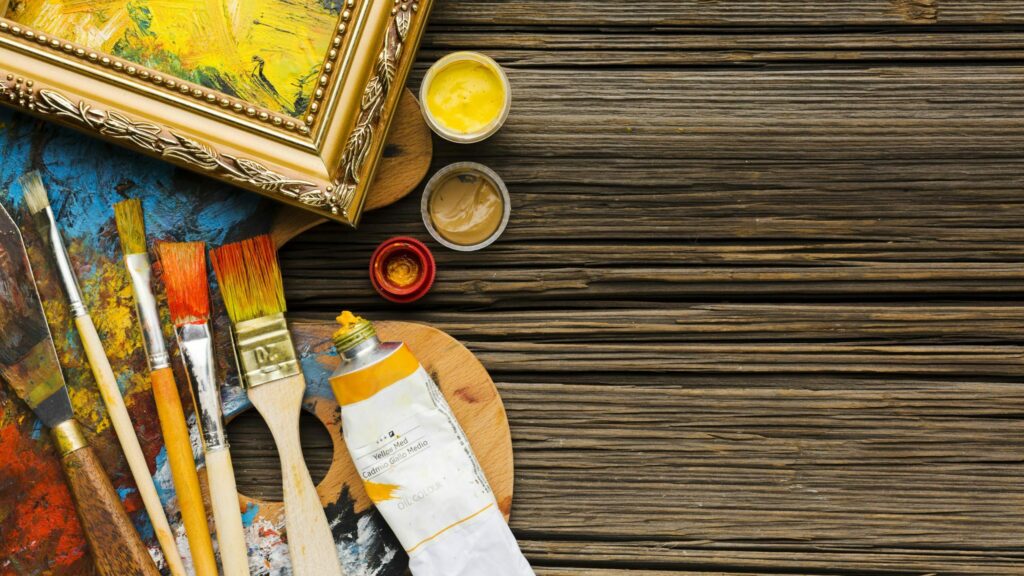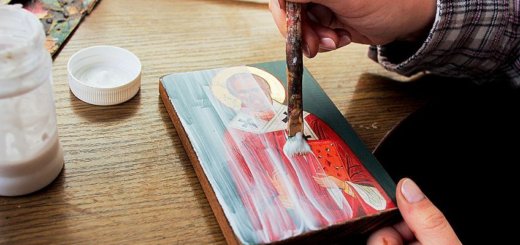Read an expert’s opinion on acrylic paint
As with any skill, learning how to paint with acrylic paint takes time and requires lots of trial and error along the way. With the assistance of artists who have been working with acrylic paint for years, we’ve compiled a complete primer on the subject.
From a quick overview of acrylic paint online and how they vary from other types of acrylic paint online to a comprehensive step-by-step tutorial that will bring you through the whole process from start to finish, stay with us and your next painting awaits at the conclusion of this article.
Acrylic Paint – What Are They?
Before we get started learning how to paint with acrylic paint, it’s critical to first define acrylic paint and how it varies from other mediums.
“Acrylic paint are essentially pigments trapped in a water-soluble acrylic polymer medium that dries to a water-resistant finish,” explains Gary Griffin, a Houston, Texas-based artist. “The benefits of working with acrylic paint over other media are that they dry quickly, are simple to clean up, have a minimal odor, and are highly pigmented, allowing for vivid and brilliant colors.”

In contrast to oil paintings, which may take up to a day to fully dry, acrylic paint dry in minutes. “Unlike oils, you can continue painting over dried areas without seeing any faults, making it an ideal medium for novices,” adds Camilla Webster, a painter whose work has been shown in museums and galleries worldwide.
Additionally, there are some critical points to understand regarding acrylic paint: They typically dry a darker shade than the pigment they contain when wet, they do not spread (as watercolors or gouache do), they dry quickly (which has a few advantages but can make blending difficult), they are water-soluble when wet and water-resistant when dry, which means they cannot be altered once dry.
The Supplies Required and the Best Acrylic Paint Brands
The requirements for acrylic painting are a palette, a palette knife for mixing, brushes labeled for acrylic paint, a canvas (Griffin recommends a gesso-primed canvas or wood panel), a rag or paper towels, and finally, soap and water for cleaning. Additionally, an easel will come extremely helpful.
As with everything, the grade of resources accessible to you will vary. As a beginning, Webster advocates using less expensive or “student grade” materials rather than “professional grade,” adding that you may even ask an art shop worker for advice.
“Both grades are acceptable,” she explains, “but the student grade is less costly and ideal for learning or experimenting with new topics and colors as a novice.” As your confidence in your acrylic painting ability grows, you may go to higher-quality items.
Acrylic Paint Colors
Webster suggests Golden and Liquitex as the finest acrylic paint brands. Winsor Newton is another well-known, well-stocked, and dependable brand. You’re generally better off purchasing a 24- or 36-piece set of paint, which are readily available online or at art supply shops. Additionally, it’s a good idea to invest in a few bigger tubes of colors that you like or believe you’ll use often, as well as a large tube of black and a large tube of white paint, which you’ll undoubtedly need for blending and foundation work.

Brushes for Acrylic Paint
When it comes to brushes, Webster advises not being overwhelmed. “Many art students and artists place an excessive emphasis on having a big range of brushes. Purchase a few high-quality brushes and you’ll appreciate the experience much more than you would with a monstrous overpowering set or an affordable set found in plastic bags at Michaels or the art shop,” she observes. Winsor Newton and Grumbacher are two notable brush brands.
She suggests the following:
- flat acrylic paint brush
- circular acrylic paint brush
- wash brush for acrylic paint
- angled acrylic paint brush
- liner brush for acrylic paint
- fan brush for acrylic paint
“Visit a nice local art shop and search for the acrylic paint brushes sign in the brush aisle,” Webster advises. “Raise them and remove them from their casing, then run your fingers through them. This is your sorcerer’s wand. Feel it, hold it, and use your fingertips to gently feel the bristles. It should be brushed over your free hand. This is your brush, and with it you will do great things.”
Additionally, you’ll want a substance that maintains the condition of your brushes. The Masters Paint Brush Cleaner and Preserver is recommended.
Easel & Canvas
To get started with acrylic paint, it’s recommended to get a bundle of acrylic-approved canvas boards. You may either prime them yourself or have them primed for you. White primed canvas boards will feature labels such as “triple primed gesso.” “By purchasing a less expensive kit like this, you can experiment with ideas and themes without worrying about working on a $50 canvas,” Webster explains.
While an easel is not required, you may find that it enhances your painting experience. An H-frame tabletop easel costs between $20 and $40 and can be stored at home without taking up a lot of room, according to Webster. If you’re looking for a more durable easel, she advises browsing lightly used easels on Facebook Marketplace, eBay, or CraigsList, or inquiring at your local art shop. Large, high-quality standing easels may easily cost several hundred dollars, so take your time and examine your possibilities.

A Simple Beginner’s Guide to Acrylic Painting
Though the following step-by-step approach is adaptable, acrylic painting should typically follow the same structure. This is because acrylic paint, as previously said, are not as flexible or fixable as watercolors or oil paintings. Learn more questions/answered on acrylic paint.
The First Step Is to Set Up Your Painting Station
Set up your easel and materials in a peaceful area of your house or even outside. “Assemble your easel by placing your canvas on it, a rag or paper towel on the palette, and your brushes in a sturdy cup near the palette. “All of them should be oriented according to whether you are left- or right-handed,” Webster advises. If you’re indoors, cover the floor directly under you with a tarp, an old rug, or rubbish bags.
Step Two: Experiment and Practice with Your Materials
The first step in mastering an art form is becoming acquainted with the medium. That includes developing an understanding of how acrylic paint applies, how fast it dries, how it sets on your chosen canvas, and how it combines with other colors. You may also experiment with other goods that have an effect on all of the above.
“For example, there are several solutions available to ‘extend’ the life of the paint or to vary its consistency and sheen, such as thickening the acrylic paint for a more dimensional impression or switching from a matte to a glossy finish,” Griffin observes. “Most acrylic paint may also be diluted with water to varied degrees or used directly from the tube,” he says.

